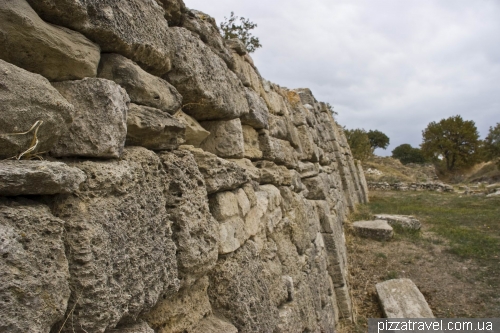Troy is probably the most famous of ancient cities, which did not live up to our days. Curiously, but many people don't know that the city was located on the territory of Turkey. Information about Troy survived thanks to the "Iliad" of Homer, the oldest surviving monument of ancient Greek literature. Recent studies have shown that Homer lived in the 8th century BC, and he described the events of the Trojan War which took place 400 years earlier. It is logical to assume that many of the events in the poem can be invented.
Moreover, 150 years ago it was impossible to say exactly what Troy ever existed. Archaeologists have searched for it, but in the wrong places. In 1869 a german businessman and amateur archaeologist Heinrich Schliemann made the assumption that Troy should be sought under the Hissarlik hill, near the coast. However, the European archaeological community was not interested in his theory, and Schliemann decided to look for Troy by himself.
Excavations took place from 1871 to 1873, and, contrary to expectations, a miracle happened. Were found several cultural layers upto the Bronze Age. Most scientists strongly condemned Schliemann, because they believed that he digs too rough and misses many important things simply because they did not interest him, as he was looking only for Troy.
Generally, it's hard to imagine how it was possible to determine that this was really Troy. In 1871 Schliemann excavated six cultural layers, and on the second layer from the bottom discovered collection of gold and bronze ornaments. It has been suggested that this is "Priam's Treasure" - the legendary king who ruled during the Trojan War. This event became a sensation in the world of archeology. But later, in 1882, nine cultural layers were discovered and found that the layer with the treasure are dated about 2000 BC. Treasure was taken to Berlin and then transported to Moscow by Soviet soldiers. For a long time it was kept in the basement, but since 90s have been exhibiting at the Pushkin Museum.
Amateur archaeologist made several similar errors in the dating of found objects, but Troy was still found in this place. Unfortunately Schliemann did not recognize this fact. Having spent half a lifetime in search of the fabled city, he probably did not understand that he had found it. Though he opened new unknown cultures and civilizations more ancient than the classical Greece.
At the moment scientists have established exactly 9 layers of ancient Troy. The oldest layer refers to the 3000-2600 years BC., when the first settlement appeared. Layer which refers to the period of the Trojan War is dated 1300-1200 BC. But think about the following. The remains of the fortress of proper age were found, many items of that era too, but still archaeologists did not find anything that could be associated with the "Iliad". That means Troy shown to the tourists is an assumption of scientists and not a confirmed fact. If someone tells you that Troy is real - do not believe.
On the next picture you can see the distance from the city to the sea.
As for the Trojan horse (from the "Aeneid" or "Odyssey"), which is famous much more than Troy, at the moment it is believed that this is a myth. I can not imagine how one can prove that the horse was real, he's wooden and after 3,000 years completely disappeared. Adam and Jamie, did you hear that? :)
We saw two horses: in the Troy and on the waterfront in the city of Canakkale. The last one was used in the movie Troy and was purchased by the Turkish government from Warner Brosers.
Excellent article with the renovations of Troy.
Getting there: The nearest town is Canakkale, there are regular bus connection (45 minutes). From Canakkale buses run from 7 to 15, from Troy from 9:30 to 17:30. You can reach Canakkale from Istanbul by bus in 5-6 hours ($25). There is also an airport, where three times a day fly Turkish Airlines.












